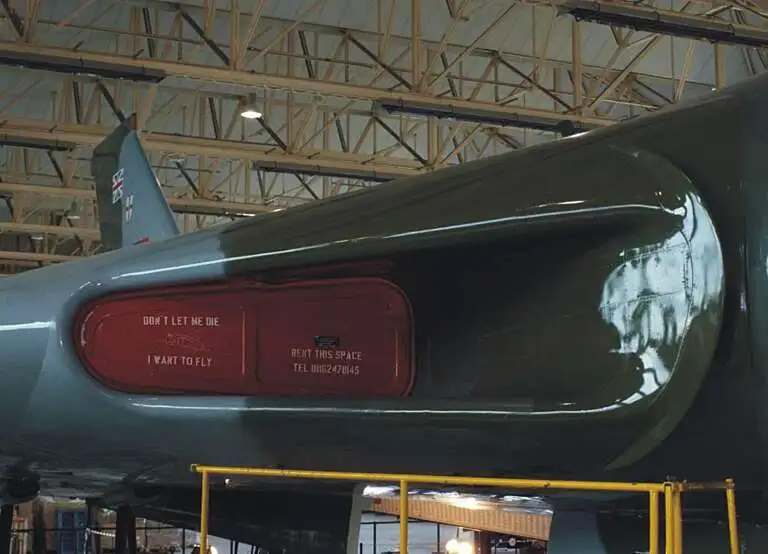
We All Love the Howl
Feature article on part of XH558’s 2013 Winter Service – by Sam Evans, airframe technician. It’s what 558 does best, her signature and lets you
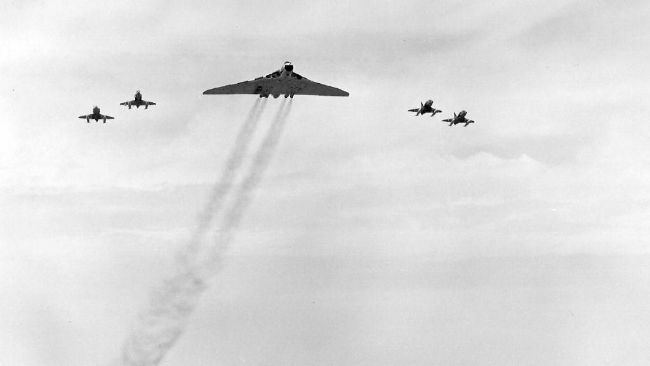
Originally written for VTST by Lieutenant Colonel A.W Garrad in 2012
In recognition of the Australian and NZ financial supporters of XH558, of which I am one, I have compiled some brief research into visits made by Vulcans to Australia and New Zealand over the course of last century. It would seem the Vulcan was a regular visitor down under. From my research, I have identified the following known occurrences which are not likely to have been the only occasions. Here are some short extracts from my Vulcan-ology (Study of Vulcans):
1956
The ill-fated Operation Tasman Flight Vulcan B1 XA897 in Australia in September 1956. XA897 visited Melbourne, Sydney and Adelaide on its outbound route to New Zealand and via Brisbane and Darwin on its return. It is thought the location pictured in both may have been RAAF Base Amberley near Brisbane Queensland.
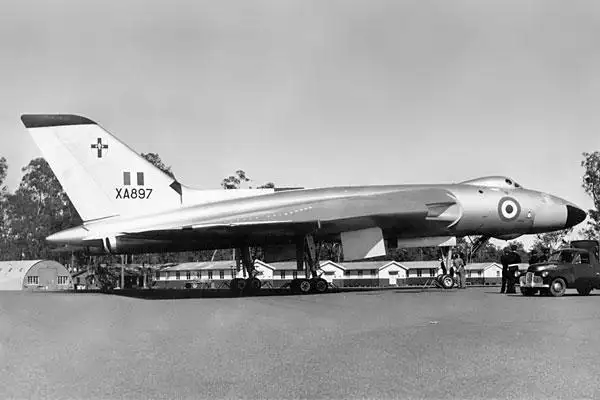
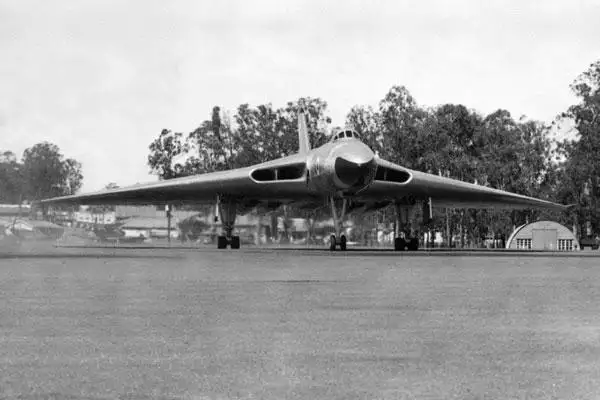
1961
In June 1961, XH481 Vulcan departed from RAF Scampton Lincolnshire on a non-stop flight to RAAF Richmond near Sydney, a journey of 18,507 km, flown in 20 hours and three minutes requiring three air to air refuellings (AARs). This was to demonstrate the increased strike range of the Vulcan with AAR, a factor which later proved its worth during the Falklands conflict.
1962-64
XH539 was deployed to RAAF Base Edinburgh near Adelaide South Australia along with a Handley Page Victor (XL161) as part of No. 4 Joint Services Trial Unit RAF to support the testing of the Blue Steel cruise missile at Woomera. At that time Woomera was the largest land test range facility in the world. Originally the missiles were designed to be released at high altitude and cruise to the target area some 200 miles away. Thus the aircraft delivering the missile (although visible to radar) had the advantage of high altitude to avoid SAMs and standoff range to aid survivability. However following the successful engagement of a U2 spy plane piloted by Gary Powers in 1960 the Air Ministry determined in June 1963 that a change to the delivery method was required to counter the new threat posed by high level surface to air missiles. This involved the low level release of the missile at only 200ft AGL from which the missile would climb to over 40000ft before diving onto its intended target.
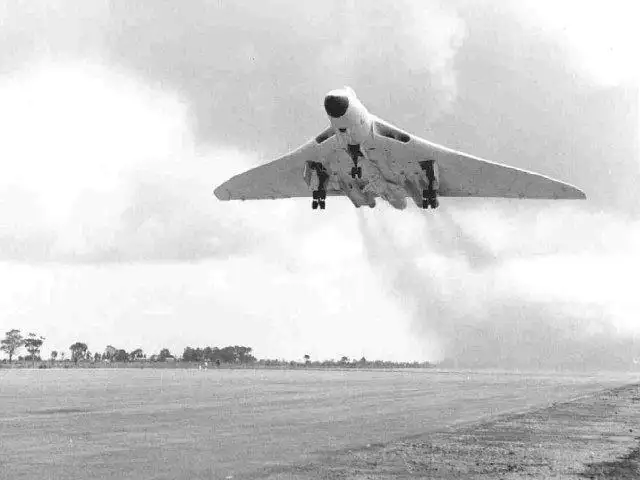
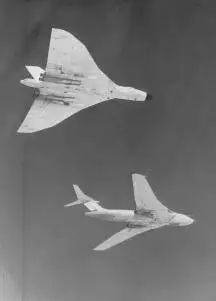
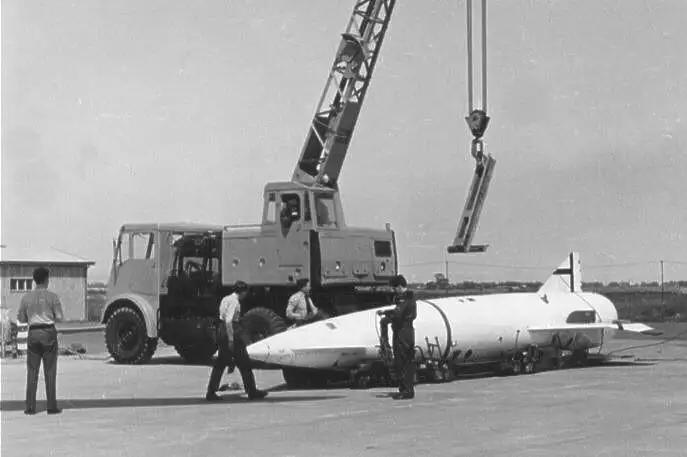
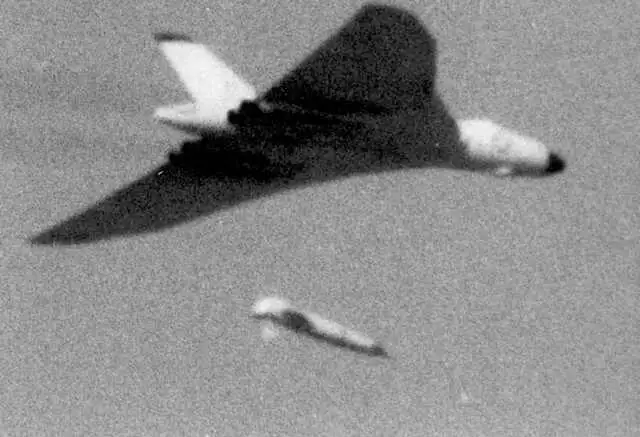
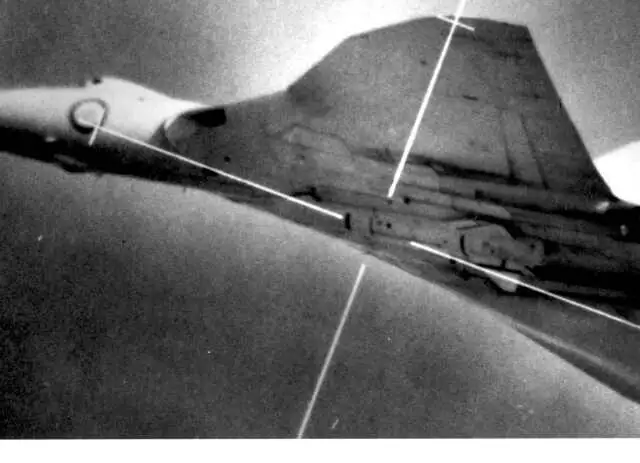
1971-72
RNZAF A-4Ks and a British AVRO Vulcan overfly RNZAF airbase Ohakea in 1971.
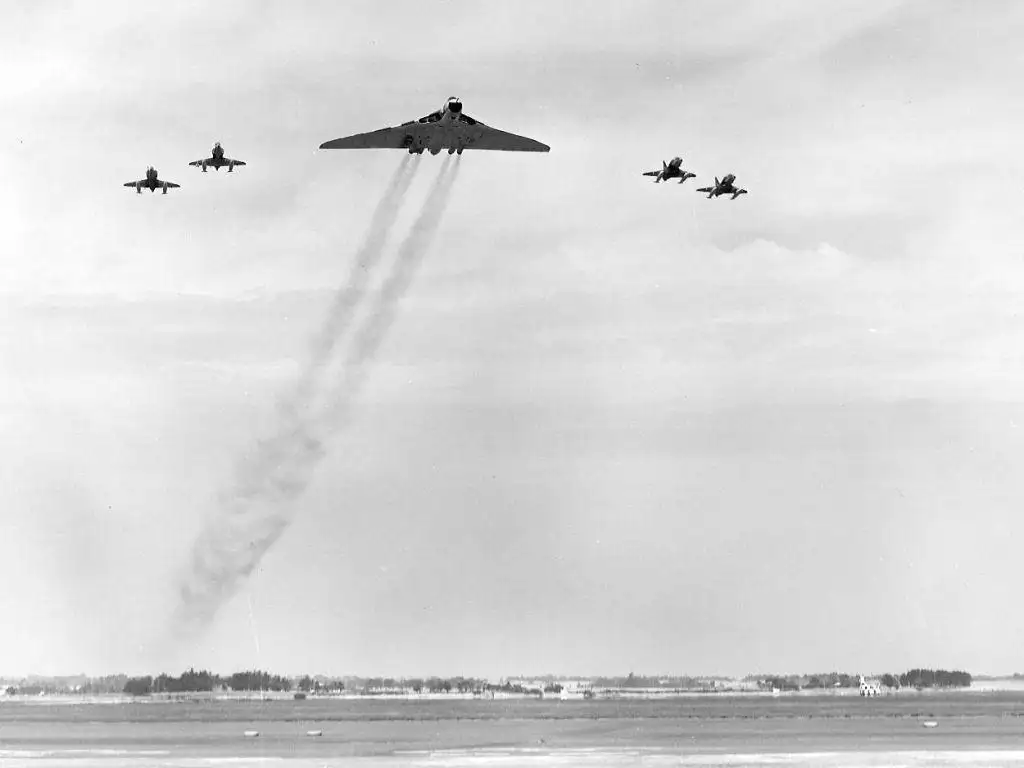
Pictured below is an RAF Vulcan (tail number unclear but likely XH562) passing through RAAF Base Williamtown near Newcastle NSW, possibly on return from visit to NZ as part of a NEAF deployment. The flight line of 77Sqn RAAF Mirages (IIIC) pictured on left.
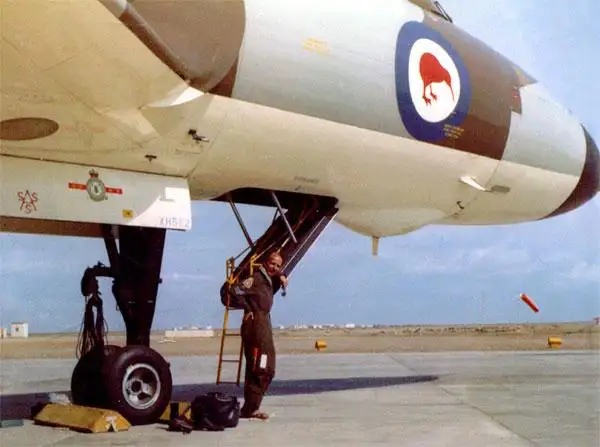

Crew Chief Chf Tech Bill Pearsey poses next to Avro Vulcan B2 XH562 of the NEAF Bomber (Akrotiri) Wing at RAF Masirah in March 1972. 562 was returning from a trip to New Zealand where it had been most spectacularly ‘zapped’ by personnel of the RNZAF. The squadron badge on the nose wheel door is that of No 75 Squadron RNZAF. Bill Pearsey remembers:
“The ‘vandalism’ was done at Ohakea. Even the station commander was involved. We threatened to fly under Sydney Harbour Bridge on the way back. We had arrived at Ohakea on the Monday; the following day we were taken on a trip to Roturua in a VIP Dakota. They were just removing the steps that they used to paint the kiwi as we arrived back in the evening. On the Wednesday we flew down to Christchurch. Some Yanks came to ask us how long us Kiwis had been operating Vulcans and my mate told them that 562 was the first of 94 that we were getting. Some months after I arrived back in Akrotiri I received a very large envelope containing a photo of a squadron of 9 Kiwi Vulcans flying over Ohakea control tower. It was definitely the best trip I ever did.”
The painting below is by aviation artist John Young, of a Vulcan over Sydney Harbour (date and tail number unknown). This may have been XH562 given Bill Pearsey’s previous comments above less kiwi insignia on port side (artist’s license perhaps). The depiction of a Blue Steel under belly is also a bit misleading as these were withdrawn from service in 1970, so may be an earlier flight than 562. Nonetheless, a spectacular aspect of the huge delta wing over an iconic Australian landmark.
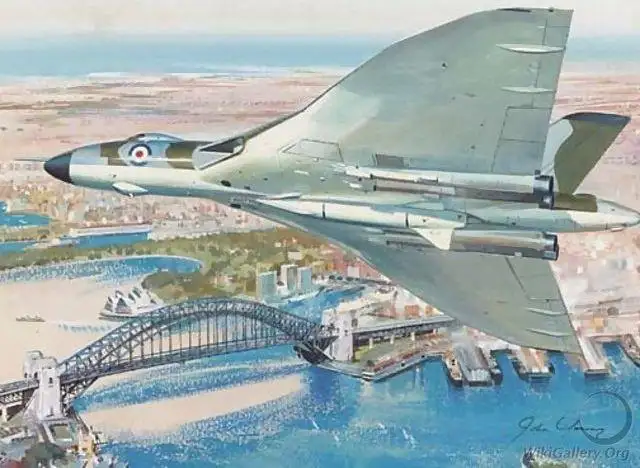

Feature article on part of XH558’s 2013 Winter Service – by Sam Evans, airframe technician. It’s what 558 does best, her signature and lets you
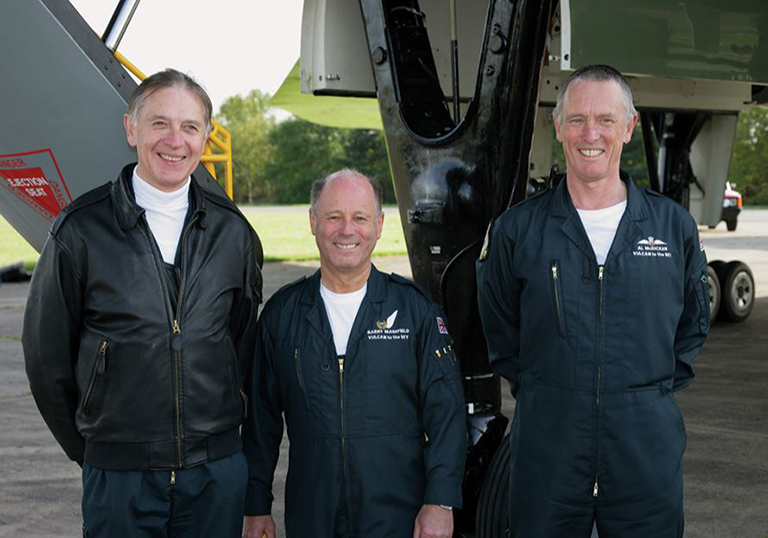
Barry Masefield was the Air Electronics Officer (AEO) for Vulcan XH558 and had flown in this iconic aircraft for over 30 years, also being a
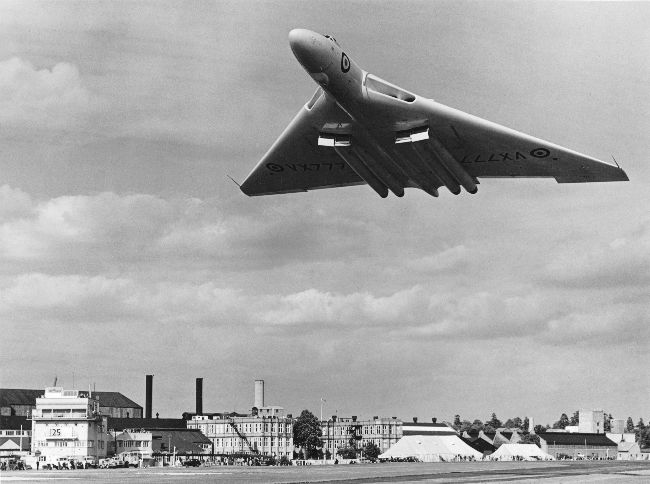
Mr. Alan Ainsworth, was on the Flight Test and development Team of AV Roe – read on for an interesting account of the early days,
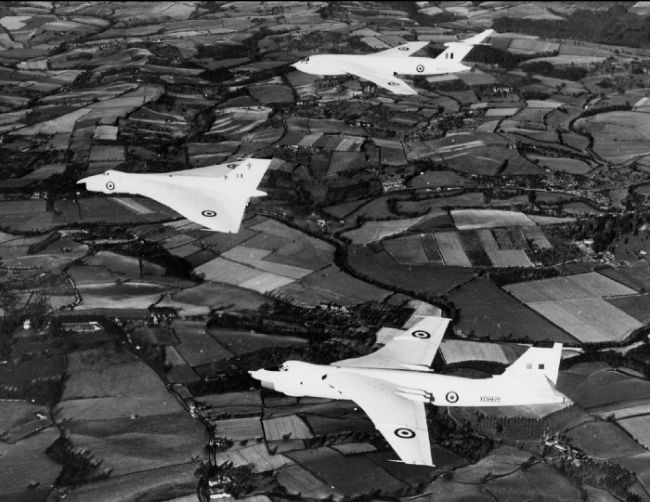
The July 1945 General Election saw a Labour Government come to power in a landslide victory under Prime Minister Clement Attlee. The use of two